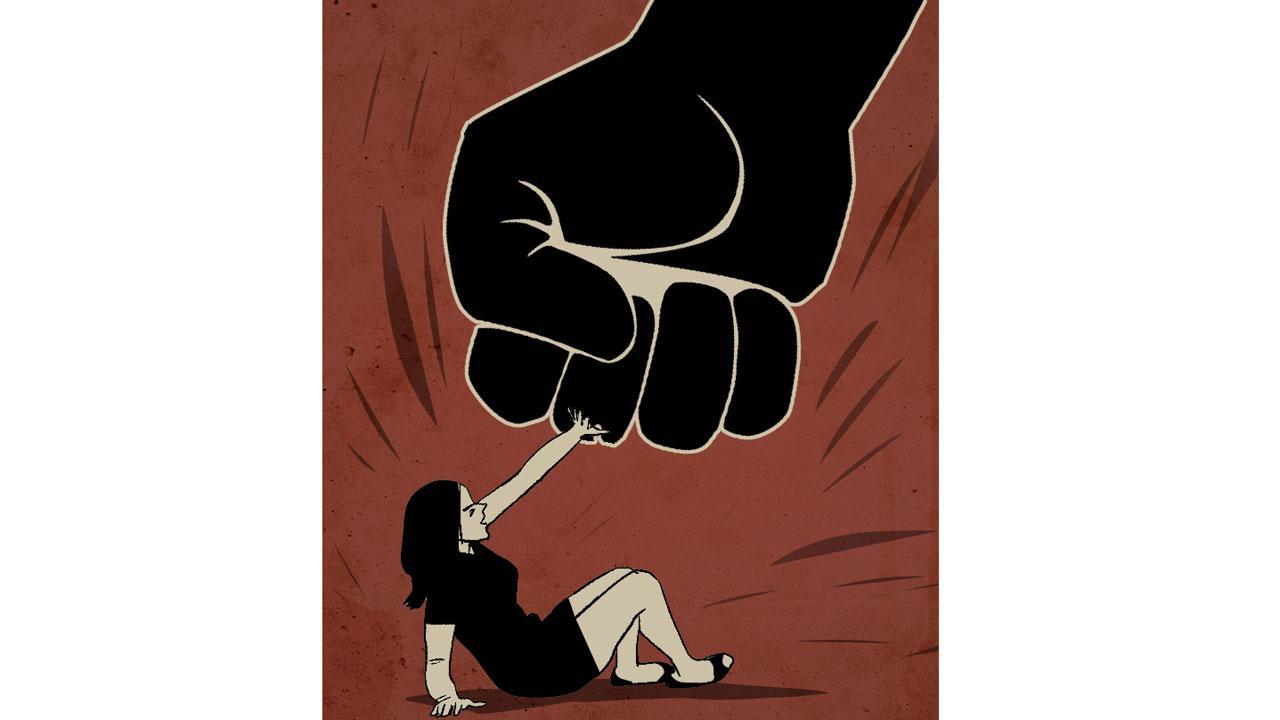Urban or rural, women were more likely to be abused if they were older, less educated and poor. Or, if they have a job or are seen as too outgoing

Illustration/Uday Mohite
![]() Last week, a film producer named Kamal Kishore Mishra, ran over his wife’s legs at 3 am. He was in his Mercedes with a woman, presumably an amorous relationship. His wife, finding him thus, banged on the car window. He moved the car a little, enough to dislodge her, so she fell, then continued to drive over her legs. He did stop for a minute (so nice) but he did not get out of the car or even roll down the window. Once someone came to help his wife, he sped away.
Last week, a film producer named Kamal Kishore Mishra, ran over his wife’s legs at 3 am. He was in his Mercedes with a woman, presumably an amorous relationship. His wife, finding him thus, banged on the car window. He moved the car a little, enough to dislodge her, so she fell, then continued to drive over her legs. He did stop for a minute (so nice) but he did not get out of the car or even roll down the window. Once someone came to help his wife, he sped away.
ADVERTISEMENT
The incident sounds uncommon—but the only uncommon thing about it is that it was captured on CCTV. Otherwise domestic violence happens behind closed doors. Not that doors block out the sounds of violence, or the tone in which men denigrate their wives, or that they don’t do it when you too are in their home, jokingly or nastily humiliate their wives for being homebodies or limited in some way, when that’s the precise gendered expectation they had when marrying.
We all know those stories—we probably have a couple in each of our families. As per NFHS-5, 29.3 per cent married Indian women aged 18-49 years have faced domestic violence—physical, emotional, sexual. 3.1 per cent women have experienced physical violence during pregnancy. Around 3.5 per cent of respondents said they experienced all three types of abuse. Meaning, beating, burning, hair pulling, arm twisting, kicking, dragging, humiliation before others, insulting, abusing, undermining, forced sex or unwanted sexual acts under threat. Nearly seven per cent experienced injuries like broken bones or teeth, dislocations, head and eye wounds, burns, sprains and bruises. Urban or rural, women were more likely to be abused if they were older, less educated and poor. Or, if they have a job or are seen as too outgoing.
It’s common to hear about the trouble with “girls nowadays”, their unwillingness to live in the in-laws’ home supposedly a sign of their callousness. It’s not that the question of elders and how we care for them is unimportant. But it is hard to separate it from the expectation that a woman belongs to her husband’s family, even now. Marriage is associated with thresholds. The age when women cross over into marriageablity is underscored by anxiety about the age when they may cross out of it. The dehleez they step over in bridal finery soon turns into the closed door of matrimony, in which ghar ki baat must remain ghar ki baat. So it’s not surprising that less than one per cent of those abused sought institutional help. Only one in five told someone what she endured.
The space media makes for women’s issues is limited and calibrated. It will talk about one kind of violence—sexual—more than another—domestic. Focusing on sexuality allows media to take on a progressive air as it centralises younger, elite women, while simultaneously enabling scrutiny of their private lives, peddling innuendo about their sexual inappropriateness. It magnifies a conversation about how unsafe women are in public, demanding their protection from “other men”, more than upholding their freedoms. Meanwhile what women experience in the home, with their ‘own men’, remains relatively undiscussed. Whether in violence or pleasure—there can’t be a hierarchy of issues or groups. An integrated, systemic and robust discussion about gender remains elusive and it requires picking open the seams of marriage and ghar ki baat.
Paromita Vohra is an award-winning Mumbai-based filmmaker, writer and curator working with fiction and non-fiction. Reach her at paromita.vohra@mid-day.com
 Subscribe today by clicking the link and stay updated with the latest news!" Click here!
Subscribe today by clicking the link and stay updated with the latest news!" Click here!







